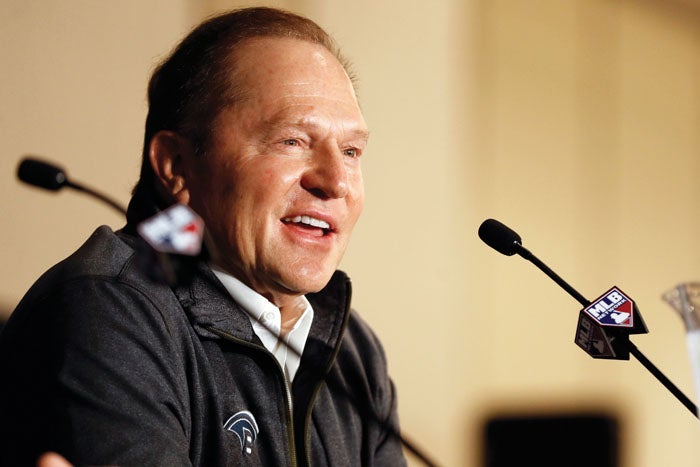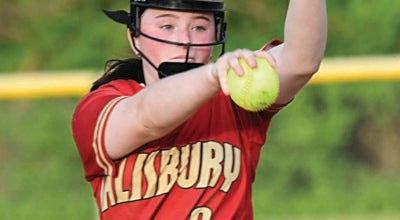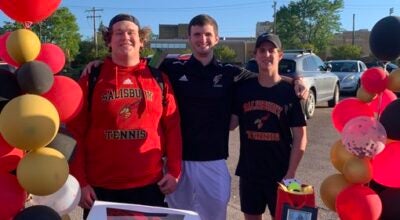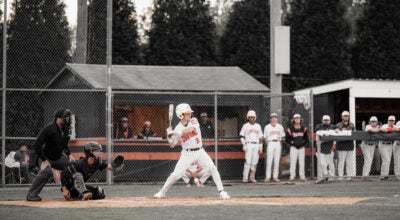MLB’s winter meetings turned into the Scott Boras show
Published 8:22 pm Thursday, December 12, 2019

- Baseball agent Scott Boras jokes during a news conference at the Major League Baseball winter meetings Monday, Dec. 9, 2019, in San Diego. Nationals pitcher and World Series MVP Stephen Strasburg agreed to a record $245 million, seven-year contract on Monday. (AP Photo/Gregory Bull)
By Ronald Blum
AP Baseball Writer
SAN DIEGO (AP) — A mostly dreary winter meetings lacking spectacular swaps will be remembered as the Scott Boras show.
Baseball’s most prominent agent dominated each of the three full days of meetings with a nine-figure contract, deals for Stephen Strasburg, Gerrit Cole and Anthony Rendon that totaled $814 million.
Just two trades were announced: The San Francisco Giants acquired shortstop Zack Cozart and infield prospect Will Wilson from the Los Angeles Angels for a player to be named or cash, and the Chicago White Sox obtained outfielder Nomar Mazara from the Texas Rangers for outfield prospect Steele Walker.
“I think it’s hard to say that there hasn’t been a trend,” new Boston Red Sox chief baseball officer Chaim Bloom said. “It’s important not to get too focused on artificial timetables. You want to be prepared to do something when you think it’s going to help you, but you don’t want to force anything.”
The podium and dais remained in nearly pristine condition, hosting just one player announcement: Washington’s $245 million, seven-year contract on Monday to retain Strasburg, the World Series MVP.
Boras’ other big deals remained pending successful physicals as executives and agents cleared out Thursday: Cole’s $324 million, nine-year agreement to leave Houston for the New York Yankees and third baseman Anthony Rendon’s $245 million, seven-year contract to depart the Nationals for the Los Angeles Angels.
Just 25 of the 168 players who exercised their right to become major league free agents last month had finalized deals when the meetings ended Thursday, slightly ahead of the 21 of 164 when last year’s session ended in Las Vegas. The pace of talks does seem faster.
“It feels to me like there’s going to be continued action in free agency in the days to come and early next week,” Chicago Cubs general manager Jed Hoyer said. “It seems like there’s probably some free agent deals that are closer to fruition. They’re not ready to be announced yet, but there’s a lot of activity. I think as those things get finalized, it will clarify the trade market.”
Boras said four straight years of declining major league attendance sparked teams to be more aggressive in an effort to excite fan bases and sell tickets.
“It’s a more competitive environment. More teams are trying to win,” New York Mets general manager Brodie Van Wagenen said.
Among the final deals reached on the final day of the meetings:
— former AL Cy Young Award winner Rick Porcello and the New York Mets agreed to a $10 million, one-year contract.
— outfielder Brett Gardner stayed with the New York Yankees after the best offensive season of his career, agreeing to a one-year contract that guarantees $12.5 million.
— catcher Austin Romine left the Yankees and agreed to a $4.15 million, one-year contract with Detroit.
People with knowledge of the deals revealed them to The Associated Press on condition of anonymity because the agreements had not been announced.
Top free agents remaining on the market include pitchers Hyun-Jin Ryu, Madison Bumgarner, Dallas Keuchel, Will Harris and Julio Teheran, third baseman Josh Donaldson and outfielders Marcell Ozuna and Nick Castellanos.
Also on the final day of the meetings, Major League Baseball said it will start testing for opioids and cocaine, but only players who do not cooperate with their treatment plans will be subject to discipline.
Marijuana will be removed from the list of drugs of abuse and will be treated the same as alcohol as part of changes announced to the joint drug agreement between MLB and the players’ association. In addition, suspensions for marijuana use will be dropped from the minor league drug program.
Opioids are classified as a drug of abuse under the joint big league program, which began in late 2002 and until now has limited testing to performance-enhancing substances and banned stimulants.
Talks of adding testing for opioids began following the death of Los Angeles Angels pitcher Tyler Skaggs, who was found dead in his hotel room in the Dallas area on July 1 before the start of a series against Texas. A medical examiner’s office said the 27-year-old died after choking on his vomit and with a toxic mix of alcohol and the painkillers fentanyl and oxycodone in his body.
———
AP Sports Writer Jake Seiner contributed to this report.
•••
STUDY: INCONSISTENT SEAMS, PLAYER BEHAVIOR BEHIND HR UPTICK
SAN DIEGO (AP) — Baseballs weren’t juiced during a record-setting 2019 regular season, according to a study commissioned by Major League Baseball.
They were just flying farther.
A four-person committee of scientists concluded baseballs this year had less drag on average than in previous seasons, contributing to a power surge that resulted in a record number of home runs. Their report released Wednesday blamed the spike on inconsistencies in the seam height of the baseballs, as well as “changes in player behavior.” Batters connected 6,776 times in the regular season, smashing the record of 6,105 set in 2017.
The committee says it did not find evidence that MLB intentionally altered baseballs and believes inconsistencies were due to “manufacturing variability.” The balls are hand-sewn by workers at Rawlings’ factory in Costa Rica.
“We have never been asked to juice or de-juice a baseball,” Rawlings President and CEO Michael Zlaket said. “And we’ve never done anything of the sort. Never would.”
The 27-page report was authored by physics professor Alan Nathan, statistics professor Jim Albert, mechanical engineering and mathematics professor Peko Hosoi and mechanical engineering professor Lloyd Smith.
The committee concluded 60% of the home run surge across 2018-19 could be attributed to an increase in carry, with 40% due to players attempting to hit more fly balls.
Scientists recommended MLB consider installing humidors at all 30 ballparks “to reduce the variability in storage conditions” and install atmospheric tracking systems in each stadium. They believe Rawlings should begin tracking dates that baseballs are manufactured and shipped, and they also suggested a study with a larger sample size to explore the possibility carry is influenced by the rubbing mud applied to bright, white baseballs before they are used in games.
MLB plans to accept those recommendations. Commissioner Rob Manfred said the league does not want to abandon the handmade balls from the Costa Rica factory in favor of an automated manufacturing process with synthetic materials.
“I think we understand the variability in the baseball better today than we did at any point in the history of the game,” Manfred said. “The fact that we understand the variability, I don’t really see as a motivator to do something drastic in terms of changing the way the game is played.”
The committee confirmed suspicions by players and coaches that the “juiced” ball was carrying less during the 2019 postseason. Cardinals manager Mike Shildt said during the NL Championship Series that St. Louis’ analytics team believed fly balls were traveling 4 1/2 feet less on average. That backed a study published by data scientist Rob Arthur at Baseball Prospectus showing the balls suddenly had less drag.
The scientists could not determine why the October balls weren’t flying as far. MLB has said the postseason balls were pulled from the same batch as the regular-season ones, and Nathan said there was no discernible difference in the seam height among the samples studied.
The aerodynamics of baseballs were found to be notably different within each season. Even during a given game, there could be significant disparity in ball flight caused by shifts of just .001 inches in seam height. The committee cited “ball-to-ball variation in the baseball drag that is large compared to the year-to-year change in the average drag.”
Triple-A used Rawlings balls from the Costa Rica factory for the first time this season, and hitters at that level also blew past the Triple-A home run record. Zlaket said that was because the balls from Costa Rica were closer to specifications because they were of a higher quality.
Not juiced balls, but spruced balls.
“The ball we make for Major League Baseball is much more precise,” Zlaket said.
MLB owns a minority stake in Rawlings, and Peter Seidler, the San Diego Padres general partner, has chief oversight of the equity firm that owns a majority share.
The study was conducted using laboratory testing of baseballs dating to 2013, as well as data pulled from MLB’s Statcast tracking system. The group said it “significantly modified” its lab tests from a previous study released in 2018, which also found that drag in the baseball was decreasing but did not confirm that seam height inconsistencies were the strongest factor.
Changes to the roundness of the ball, surface roughness and the thickness of the laces were found to be “relatively consistent.”
___
Follow Jake Seiner: https://twitter.com/Jake_Seiner
___
More AP MLB: https://apnews.com/MLB and https://twitter.com/AP_Sports





